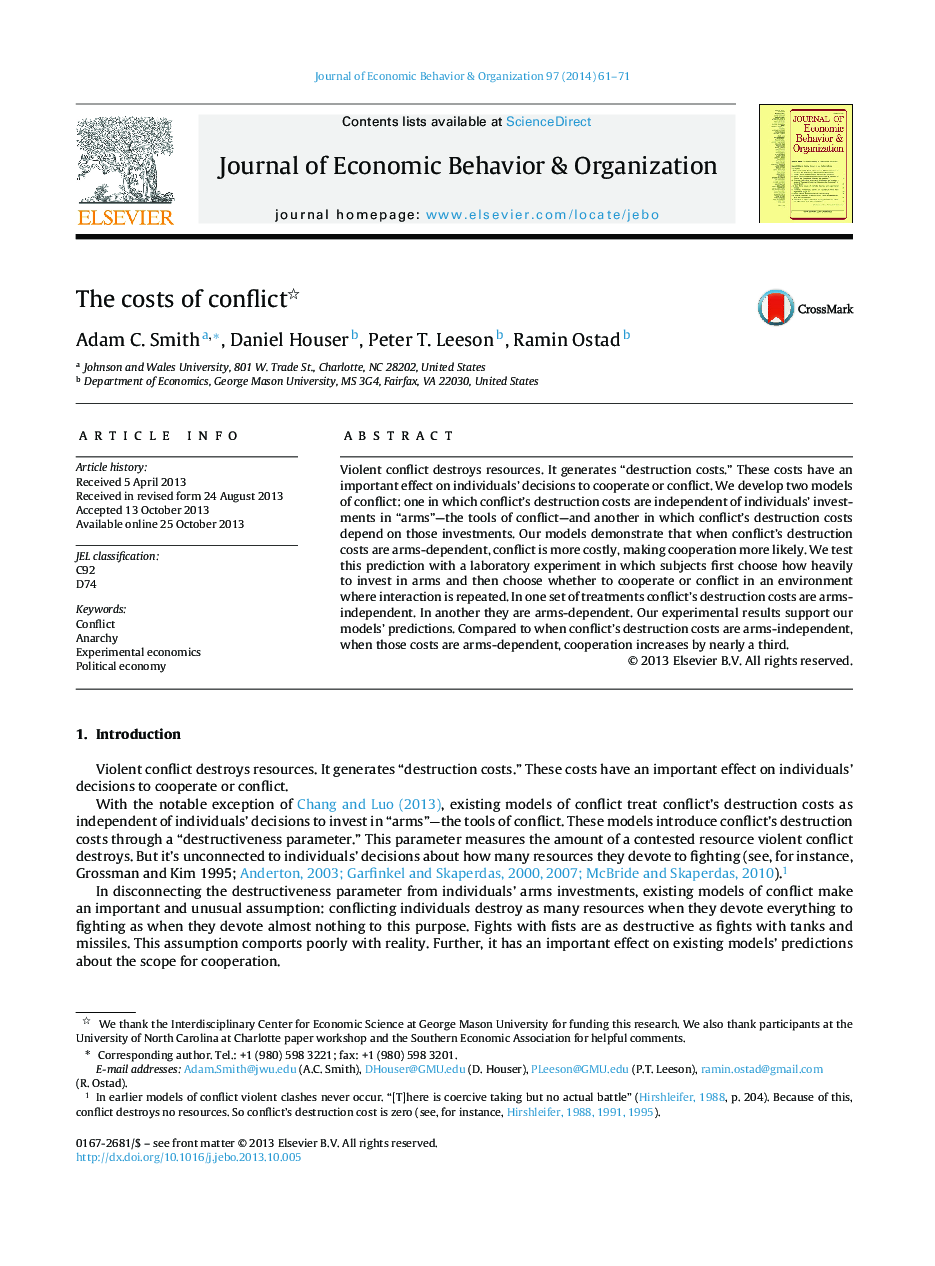| Article ID | Journal | Published Year | Pages | File Type |
|---|---|---|---|---|
| 883567 | Journal of Economic Behavior & Organization | 2014 | 11 Pages |
•We study the effect of violence in the form of destruction costs on the decision to engage in conflict.•We compare two models, one where destruction costs are dependent on the level of arming and one where destruction costs are independent of the level of arming.•We find through experimental observation that linking arming levels and destruction reduces the level of conflict.•We also find that increasing the price of arming has the counter-intuitive effect of increasing conflict.
Violent conflict destroys resources. It generates “destruction costs.” These costs have an important effect on individuals’ decisions to cooperate or conflict. We develop two models of conflict: one in which conflict's destruction costs are independent of individuals’ investments in “arms”—the tools of conflict—and another in which conflict's destruction costs depend on those investments. Our models demonstrate that when conflict's destruction costs are arms-dependent, conflict is more costly, making cooperation more likely. We test this prediction with a laboratory experiment in which subjects first choose how heavily to invest in arms and then choose whether to cooperate or conflict in an environment where interaction is repeated. In one set of treatments conflict's destruction costs are arms-independent. In another they are arms-dependent. Our experimental results support our models’ predictions. Compared to when conflict's destruction costs are arms-independent, when those costs are arms-dependent, cooperation increases by nearly a third.
